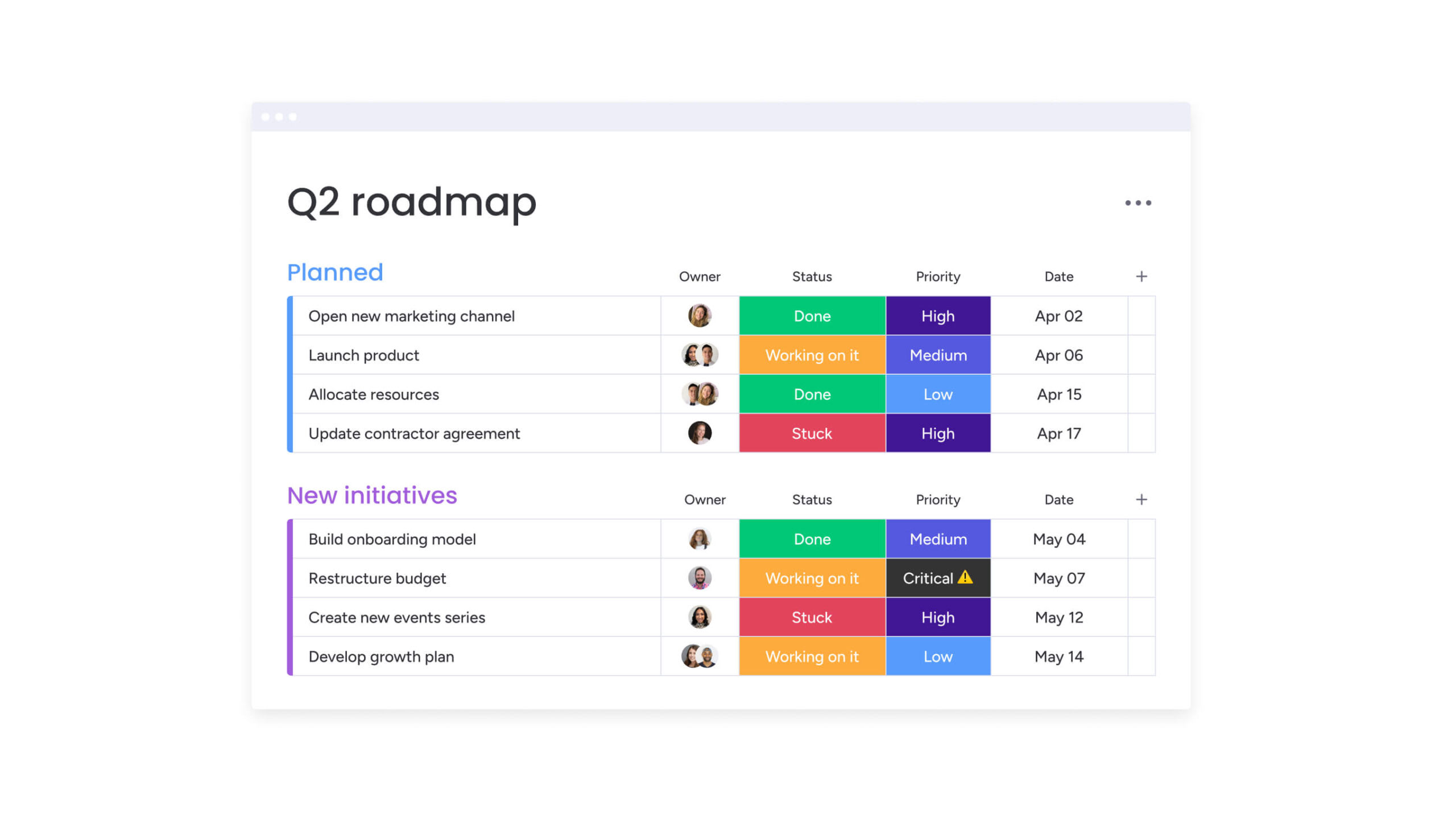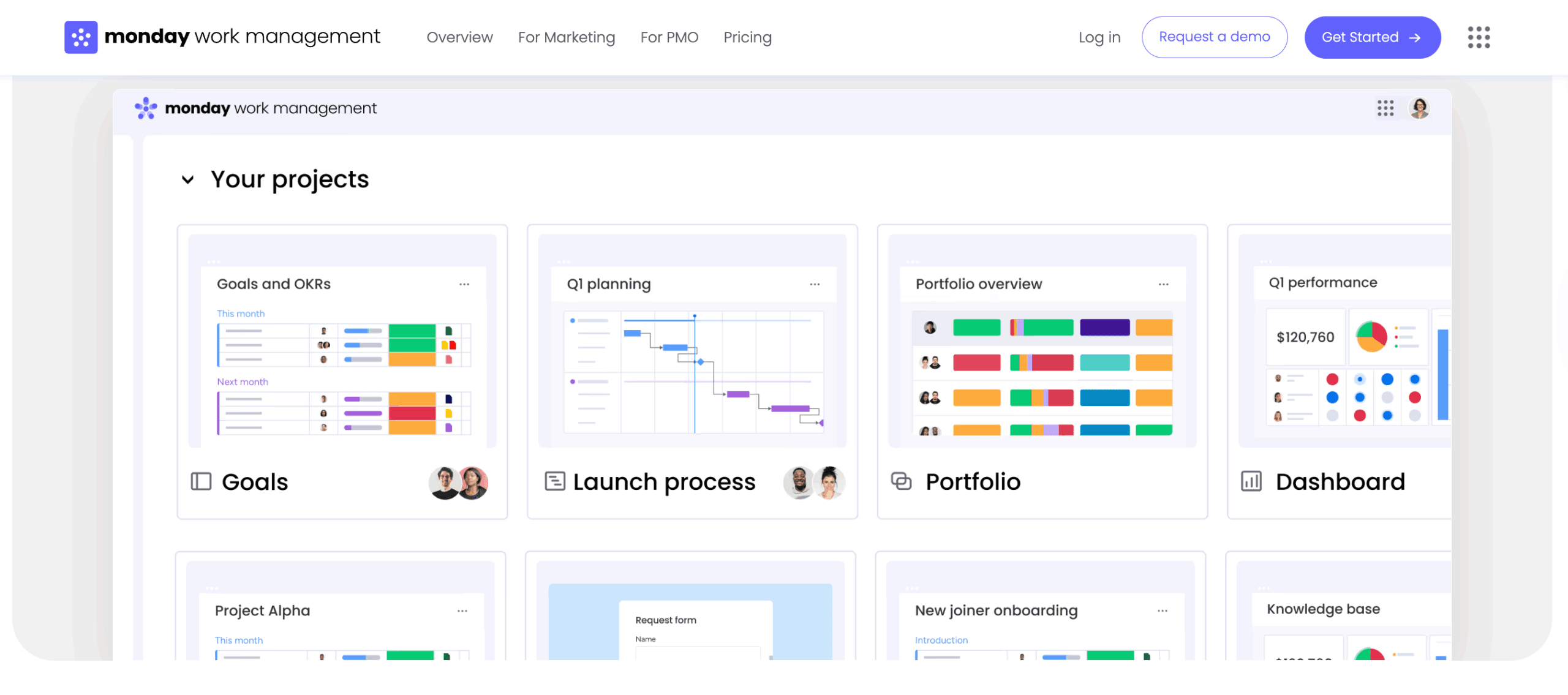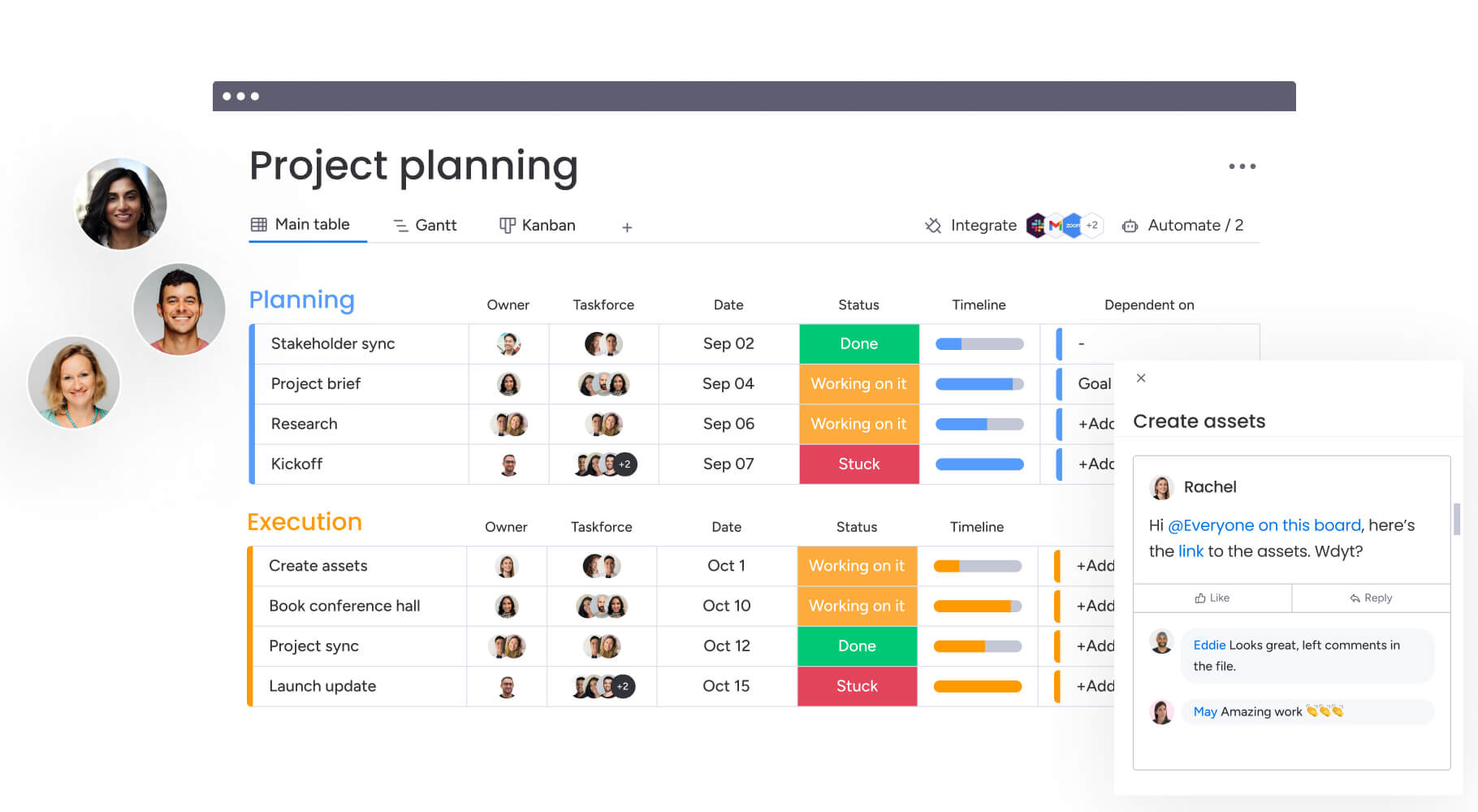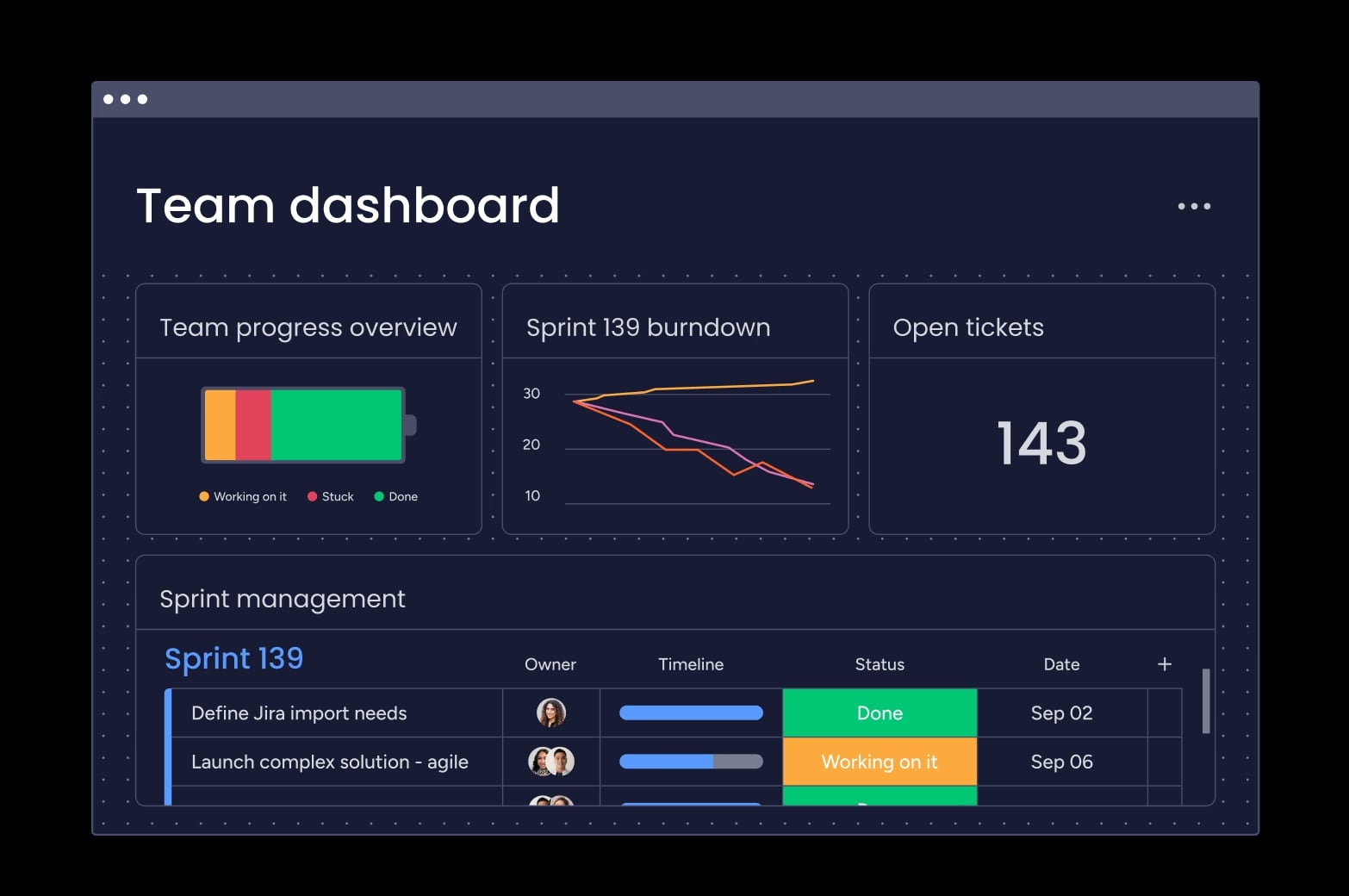A great strategy points you in the right direction, but it does not guarantee you will arrive. The journey from a big idea to a finished result is where many teams get lost. Without a detailed map, work becomes scattered, deadlines are missed, and momentum stalls.
This is where a strong implementation plan makes all the difference. It acts as the bridge between your strategy and your execution, turning ambitious goals into a series of concrete, manageable steps. By centralizing work and communication, it aligns everyone on who is doing what, when, and with what resources, transforming confusion into coordinated action.
This guide walks you through creating an effective implementation plan that drives results. We will uncover the seven essential steps for building your plan, the key components every plan needs, and the common mistakes to avoid. After reading this article, you will have gained a trusty framework for turning any strategic initiative into a successful reality, powered by a flexible work management system.
Key takeaways
- Start with precise objectives and success metrics: define exactly what success looks like before you begin, so everyone knows when you’ve won.
- Follow the 7-step framework systematically: define objectives, analyze stakeholders, map resources, identify risks, create schedules, assign roles, and set up monitoring systems.
- Avoid the biggest planning mistake and never underestimate resources: most implementations fail because teams don’t account for training time, integration complexity, and ongoing support needs.
- Use monday work management to streamline your entire process: visual tracking, automated workflows, and real-time dashboards eliminate manual work while keeping stakeholders aligned.
- Plan for change management from day one: technical success means nothing without user adoption, so build comprehensive support systems that help people transition smoothly.
What is an implementation plan?
An implementation plan is a detailed roadmap that breaks down exactly how you’ll execute a strategy or project. It spells out who does what, when they do it, and what resources they need to succeed.
Think of it as your GPS for getting from idea to reality. While your strategy tells you where you want to go, your implementation plan shows you the exact route, including all the turns, stops, and potential roadblocks along the way.
Implementation plan vs project plan
Implementation plans and project plans serve different purposes. A project plan manages a specific project with clear start and end dates whereas an implementation plan focuses on executing broader changes — like rolling out new systems or transforming how your organization operates.
For example, installing new software is a project. Getting your entire organization to adopt it, change their workflows, and realize the benefits? That’s implementation.
The table below outlines the key differences that set them apart:
| Aspect | Implementation plan | Project plan |
|---|---|---|
| Focus | Executing strategy and driving adoption | Delivering specific outputs |
| Timeline | Often ongoing or long-term | Fixed start and end dates |
| Success metrics | Adoption rates, behavioral change | On-time, on-budget delivery |
| Scope | Organization-wide transformation | Defined project boundaries |
For example, installing new software is a project. Getting your entire organization to adopt it, change their workflows, and realize the benefits? That’s implementation.

7 essential steps to build your implementation plan
Creating an implementation plan that actually works requires a systematic approach. These seven helpful steps give you a framework that adapts to any type of implementation.
Step 1: Define objectives and success criteria
Clear, measurable objectives are the foundation of any successful strategy implementation. They set the direction, define what success looks like, and keep every team working toward the same outcome.
Success criteria should capture both quantitative and qualitative results — from adoption rates, cost reductions, and performance gains to improvements in user satisfaction or process efficiency.
Engaging key stakeholders early ensures alignment and commitment before execution begins. A connected platform like monday work management makes it easy to document, track, and communicate these objectives in one shared space, ensuring clarity and accountability as your strategy takes shape.
Step 2: Analyze stakeholders and gather requirements
Stakeholder analysis reveals who will be affected by your implementation and what they need to succeed. Next, map out everyone involved — from end users to executives to external partners, ensuring a well-structured change management plan throughout.
For each stakeholder group, document:
- Level of influence: how much power they have over the implementation’s success.
- Key concerns: what keeps them up at night about this change.
- Impact assessment: how the implementation affects their daily work.
Requirements gathering means collecting detailed information about functional needs (what the solution must do), technical needs (how it will work), and business needs (why it matters). Don’t skip documenting current processes — understanding today’s reality helps you plan tomorrow’s improvements.
Step 3: Map out resources and budget allocation
Resource planning covers more than just people and money. You need to account for time, skills, technology, and external support across different implementation phases, making resource management essential.
Start with human resources. Identify who you need, their roles, and required time commitments. Document skill gaps that might require training or hiring. Plan for resource conflicts when team members juggle multiple priorities.
Budget allocation requires detailed planning across categories:
- Direct costs: software licenses, hardware, consulting fees.
- Indirect costs: training time, temporary productivity dips, ongoing support.
- Contingency funds: buffer for unexpected expenses or scope changes.
Technical resources include infrastructure, platforms, and integration requirements. Map what you have, what you need, and dependencies between components.
Step 4: Identify risks and mitigation strategies
Risk identification means thinking ahead about what could go wrong and preparing responses, which may include a contingency plan. Common implementation risks include technical challenges, resource constraints, stakeholder resistance, and external factors like regulatory changes.
For each risk, assess probability and potential impact. Then develop specific mitigation strategies:
- Technical risks: conduct proof-of-concept testing, secure vendor support.
- Resource risks: cross-train team members, identify backup contractors.
- Adoption risks: design change management programs, create training materials.
Create contingency plans for high-impact risks. These backup approaches keep you moving forward even when major issues arise.
Step 5: Develop your implementation schedule
Your schedule sequences activities logically while respecting real-world constraints. Break implementation into phases with clear deliverables and decision points, using a project management template to maintain organization.
Dependency mapping is crucial. Identify which activities must finish before others can start. Build these dependencies into your timeline. Consider both technical dependencies (system integrations) and human dependencies (training requirements).
Add buffer time for uncertainty. Complex implementations always encounter surprises. Realistic estimates with built-in contingency prevent constant schedule adjustments and maintain stakeholder confidence.
Step 6: Assign team roles and responsibilities
Every major activity needs a clear owner with authority to make decisions, supported by a well-defined action plan that clarifies responsibilities. This isn’t just a best practice; research shows that change programs with clearly defined roles are 6.4 times more likely to succeed. Use frameworks like RACI (Responsible, Accountable, Consulted, Informed) to define involvement levels.
Communication protocols keep everyone aligned:
- Regular check-ins: weekly team meetings, daily stand-ups for critical phases.
- Status reporting: automated updates through platforms like monday work management.
- Escalation paths: clear routes for raising issues and getting decisions.
Plan for role transitions. Some responsibilities are temporary (data migration), while others continue post-implementation (user support). Document knowledge transfer to ensure continuity.
Step 7: Create monitoring and reporting systems
Finally, monitoring tracks progress and enables quick course corrections, which is critical for smooth project implementation. Set up systems that provide early warning of problems while keeping stakeholders informed.
Key performance indicators should align with your success criteria. Track both:
- Leading indicators: training completion, system testing progress.
- Lagging indicators: user adoption rates, performance improvements.
Reporting schedules match stakeholder needs. Executives might need monthly summaries while project teams require weekly details. Automated reporting reduces manual effort and ensures consistent communication.

Key components every implementation plan needs
Successful implementation plans share certain essential elements. These components ensure comprehensive coverage and effective execution, making them an integral part of operational planning across the organization.
Executive summary and scope statement
Your executive summary gives stakeholders a quick but complete overview. It should stand alone as a communication document that explains the implementation’s purpose, approach, and expected outcomes.
The scope statement defines boundaries. What’s included? What’s not? Clear scope prevents creep and keeps teams focused on the right activities.
Detailed timeline with milestones
Your timeline shows not just when things happen, but how they connect. Milestones mark significant achievements or decision points — not arbitrary dates.
Critical path analysis reveals which activities directly impact your timeline. Focus resources and attention here while allowing flexibility in non-critical work.
Resource management framework
This framework governs how you allocate, track, and optimize resources throughout implementation. Document available resources, their constraints, and procedures for handling conflicts, as these are crucial steps in resource planning.
Consider skills, availability, and development opportunities when matching resources to activities. Build in cross-training to create flexibility and reduce single points of failure.
Risk assessment matrix
A visual risk matrix helps prioritize where to focus mitigation efforts. Regular reviews keep it current as new risks emerge and existing ones evolve, providing an opportunity to refine your fallback plan.
Schedule risk assessments at key milestones. What seemed low-risk during planning might become critical during execution.
Communication and reporting structure
Your communication plan specifies who needs what information, when, and how. A communications plan template helps standardize these updates for every stakeholder. Different stakeholders have different needs:
- End users: practical information about changes affecting daily work.
- Executives: strategic updates on progress, risks, and business impact.
- Project teams: detailed coordination and technical information.
Balance meeting needs with respect for time. Use asynchronous methods like dashboards to reduce meeting overhead while maintaining transparency.

5 lessons for stronger implementation planning
Even the best strategies can falter without a solid implementation plan. The difference between success and struggle often comes down to preparation — anticipating challenges before they derail progress. Across industries and project types, a familiar set of pitfalls tends to resurface.
By recognizing these patterns early, teams can avoid unnecessary setbacks, strengthen execution, and maintain momentum through every stage of rollout. The following lessons highlight the most common obstacles in strategy implementation and how to overcome them with clear planning, communication, and the right tools to keep everything on track.
1. Underestimating resource requirements
Teams often focus on obvious needs while missing hidden requirements. Training time, integration complexity, and ongoing support frequently exceed initial estimates.
Consult experts with similar implementation experience. Use historical data as benchmarks. Build realistic buffers that account for complexity and uncertainty.
2. Neglecting stakeholder communication
Poor communication breeds resistance and confusion, as stakeholders who don’t understand changes won’t provide adequate support. Establishing a project communication plan fosters shared understanding and timely feedback. In fact, when executive committees communicate progress frequently, change programs are a whopping eight times more likely to succeed.
Proactive engagement means regular updates, feedback channels, and transparent progress discussions. Tailor messaging to address specific concerns. Platforms such as monday work management help centralize this communication, keeping everyone informed without information overload.
3. Failing to plan for change management
Technical success means nothing without user adoption. Change management helps people transition from current to future state.
Address both rational and emotional aspects of change. Provide information about new processes, but also acknowledge transition challenges. Build comprehensive support systems that accommodate different learning styles and skill levels, especially since 60% of employees globally believe better training would improve change management.
4. Overlooking risk mitigation
Waiting until problems occur limits your options and increases costs. Proactive risk management identifies issues early when you have more flexibility to respond.
Conduct thorough assessments and develop specific strategies. Schedule regular reviews to catch emerging risks. Create detailed contingency plans ready for quick implementation.
5. Missing success metrics
Without clear metrics, you can’t evaluate effectiveness or adjust your approach, and you risk disengaging your team—research shows that employees who understand how success is measured are twice more likely to feel motivated. Define specific measures from the start that align with objectives.
Track metrics consistently using platforms that provide real-time visibility. Use data to inform decisions about resource allocation and strategy adjustments.

Implementation planning software and platforms
Modern implementation planning requires more than spreadsheets and long email threads. Specialized platforms turn what was once a manual, fragmented process into a connected, streamlined operation.
By shifting planning from static documents to a dynamic, collaborative environment, these systems create a central source of truth that enhances coordination, visibility, and control. Key capabilities include:
- Centralized information: a single, reliable source for every implementation detail
- Automated workflows: built-in triggers for updates, approvals, and notifications
- Real-time visibility: immediate insight into progress, issues, and resource use
- Collaboration spaces: contextual communication that minimizes email clutter
- Flexible reporting: custom dashboards tailored to different stakeholder needs
Together, these capabilities replace scattered tools with a cohesive structure, reducing administrative work while helping teams execute with clarity and confidence.
Transform your implementation planning with monday work management
monday work management brings together all the elements needed for successful implementation planning. Visual project tracking through Gantt charts and timelines helps teams understand dependencies and adjust schedules based on real progress.
Resource management features prevent over-allocation:
- Workload view: see who has capacity for additional work.
- Capacity planning: balance assignments across team members.
- Skill tracking: match work to the right people.
Automated risk monitoring keeps you ahead of problems. Set custom alerts for risk indicators and receive notifications when attention is needed. Address issues before they impact timelines.
Stakeholder collaboration happens in context. Shared boards and real-time updates keep everyone aligned without endless status meetings. Communication stays organized and accessible.
Progress reporting becomes effortless with customizable dashboards. Generate reports automatically based on live data. Each stakeholder group gets the information they need without creating extra work for project managers.
Ready to transform your implementation planning? Get started with monday work management today.
Frequently asked questions
What is the typical timeline for creating an implementation plan?
The typical timeline for creating an implementation plan is two to four weeks, depending on the project's complexity and stakeholder availability. Simple implementations might need just a few days of planning, while complex organizational changes can require several months of detailed preparation.
How often should you update an implementation plan during execution?
You should review and update your implementation plan weekly during active execution phases. Major revisions typically happen monthly or when significant changes occur in scope, resources, or external conditions affecting your approach.
Who should be involved in creating an implementation plan?
Creating an implementation plan requires input from project sponsors, subject matter experts, department representatives affected by the change, and core implementation team members. The planning team usually includes five to eight key stakeholders to ensure comprehensive coverage without becoming unwieldy.
What is the difference between an implementation plan and an action plan?
An implementation plan is a comprehensive document covering strategy execution across an organization, while an action plan focuses on specific activities to achieve particular objectives. Implementation plans typically include multiple action plans and address broader organizational transformation beyond individual projects.
Can small businesses benefit from formal implementation planning?
Small businesses gain significant value from implementation planning even with simplified approaches matching their scale. Formal planning prevents costly mistakes and ensures efficient resource use, which is especially critical when resources are limited.
What makes an implementation plan successful?
Successful implementation plans combine realistic timelines, adequate resources, stakeholder communication, and proactive risk management. Regular monitoring and willingness to adjust based on real-world feedback ensure you achieve desired outcomes while adapting to changing conditions.
 Get started
Get started 

